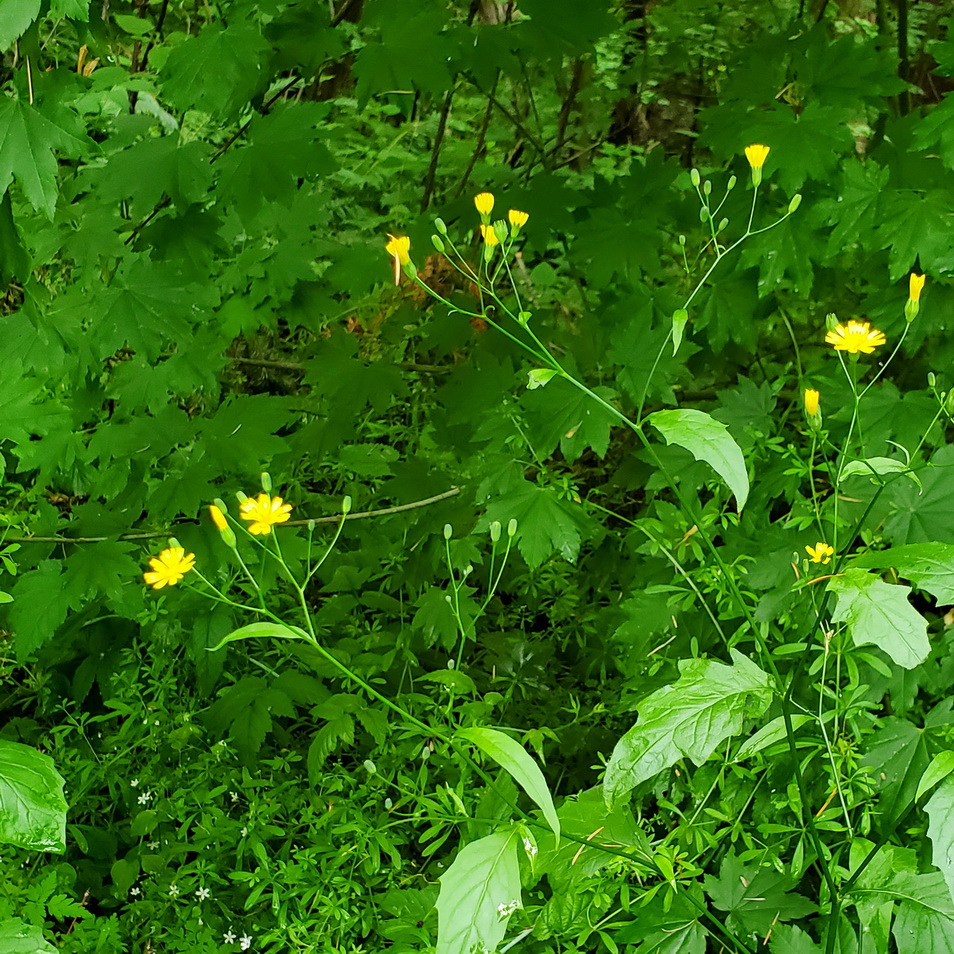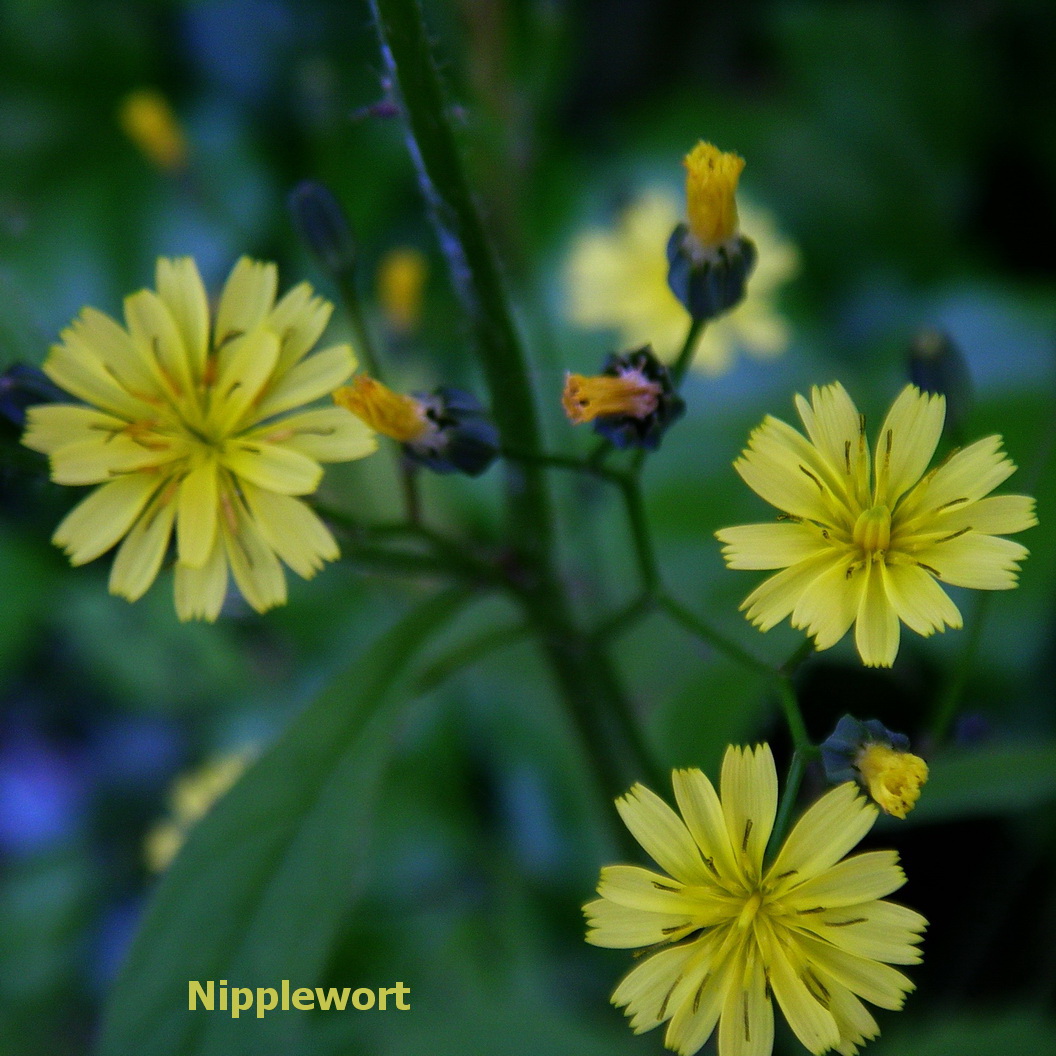‘Tis the continuing season of Nipplewort — Lapsana communis. Leave it or remove it, that is my dilemma. Or at least try to remove it. (I’ve been trying for a dozen years in Forest Park, and I can’t really say I’ve made much of a dent.) I wonder if it’s time for me to make my peace with this weedy, Eurasian annual and its cohort Wall Lettuce? After all, if the primary objective of urban forest restoration is preserving the health of the existing, mature trees, then I don’t really think that these small, non-native forbs pose much of a threat. It probably does more harm to the trees tramping around off-trail to remove them, especially on steep slopes or fragile soil.

So why bother? Is it just aesthetics, or is their control justified by the negative effects of non-native plants on biodiversity? If the forest understory is dominated by non-native plants, then it makes sense that it would weaken the ecosystem’s food chain. Nothing seems to eat Ivy. Baby birds need insects. The diets of many of our indigenous, plant-eating insects are “host specific,” often limited to one genus or even species. Eurasian plants like Nipplewort escaped their “natural enemies” when they colonized the Americas. Though still subject to debate among scientists, there is a growing body of evidence that the proliferation of non-native plants around the world may be contributing to the alarming decline of both insects and birds. (See 2020 article in Yale Environment 360.)
I can’t remember ever pulling a Nipplewort or Wall Lettuce that was being eaten by insects, but I also don’t remember seeing insects on the more-rampant native flowers either. Maybe one reason our indigenous species of Claytonia, Osmorhiza, Maianthemum, and Geum spread so quickly is that they too are not plagued by herbivores.
It’s hard to justify the removal of these weeds simply on the basis of personal aesthetics, but in truth that’s a driving force for me. And it’s more than simple appearance. It is the idealized vision of ecosystems, unique habitats in which flora and fauna have co-evolved over vast eons.
When I was about ten years old, I loved visiting the Denver Museum of Nature and Science to see its life-size dioramas of North American ecosystems — like the Colorado Aspen grove in autumn, with two elegant female wapiti standing serenely on a high mountain slope. Perhaps this was one of the sparks that ignited my passion for native flora and fauna. So, for now, I’ll continue making my rounds along trail edges and Bradley Lines, pulling the Nipplewort and its ilk, making room for the Starflower, Foamflower, Trillium, and the other precious Puget Lowland lovelies.
